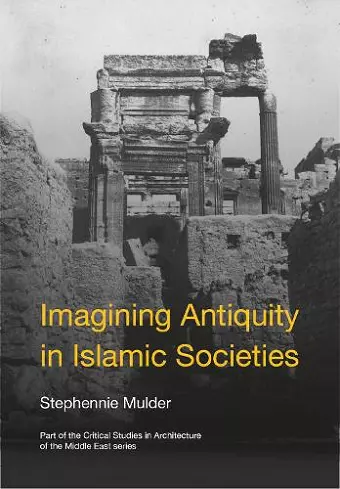Imagining Antiquity in Islamic Societies
Format:Hardback
Publisher:Intellect
Published:22nd Jul '22
Currently unavailable, our supplier has not provided us a restock date

In the aftermath of the deliberate destruction of cultural heritage pursued by Islamist groups like ISIS, many observers have erroneously come to associate Islamic doctrine and practice with such acts. This book explores the diverse ways Muslims have engaged with the material legacies of ancient and pre-Islamic societies, as well as how Islam’s own heritage has been framed and experienced over time.
This is a new collection of articles previously available in issues of the International Journal of Islamic Architecture.
The tragically familiar spectacles of cultural heritage destruction performed by the Islamic State group (ISIS) in Syria and Iraq are frequently presented as barbaric, baffling, and far outside the bounds of what are imagined to be normative, 'civilized' uses of the past. Often superficially explained as an attempt to stamp out idolatry or as a fundamentalist desire to revive and enforce a return to a purified monotheism, analysis of these spectacles of heritage violence posits two things: that there is, fact, an 'Islamic' manner of imagining the past – its architectural manifestations, its traces and localities – and that actions carried out at these localities, whether constructive or destructive, have moral or ethical consequences for Muslims and non-Muslims alike. In this reading, the iconoclastic actions of ISIS and similar groups, for example the Taliban or the Wahhabi monarchy in Saudi Arabia, are represented as one, albeit extreme, manifestation of an assumedly pervasive and historically on-going Islamic antipathy toward images and pre-contemporary holy localities in particular, and, more broadly, toward the idea of heritage and the uses to which it has been put by modern nationalism.
But long before the emergence of ISIS and other so-called Islamist iconoclasts, and perhaps as early as the rise of Islam itself, Muslims imagined Islamic and pre-Islamic antiquity and its localities in myriad ways: as sites of memory, spaces of healing, or places imbued with didactic, historical, and moral power. Ancient statuary were deployed as talismans, paintings were interpreted to foretell and reify the coming of Islam, and temples of ancient gods and churches devoted to holy saints were converted into mosques in ways that preserved their original meaning and, sometimes, even their architectural ornament and fabric. Often, such localities were valued simply as places that...
'Imagining Antiquity in Islamic Societies makes for an interesting probe into the often complicated relationship between Islam’s nascent sense of self and its precursors as well as contemporary societies and cultures. Framed around the themes of faḍā’il (virtues) and ʿajā’ib (wonders), the authors explore Islamic responses to antiquity: its physical ruins, the incorporation of spolia into its new occupier’s architecture, the thorny issue of heritage from a historic perspective and bringing it up to the present and covering Abbasid Iraq, Yemen, Islamic India, Ottoman Greece, Palestine and Tunisia.'
-- Cleo Cantone, The Muslim World Book ReISBN: 9781789385489
Dimensions: unknown
Weight: unknown
294 pages